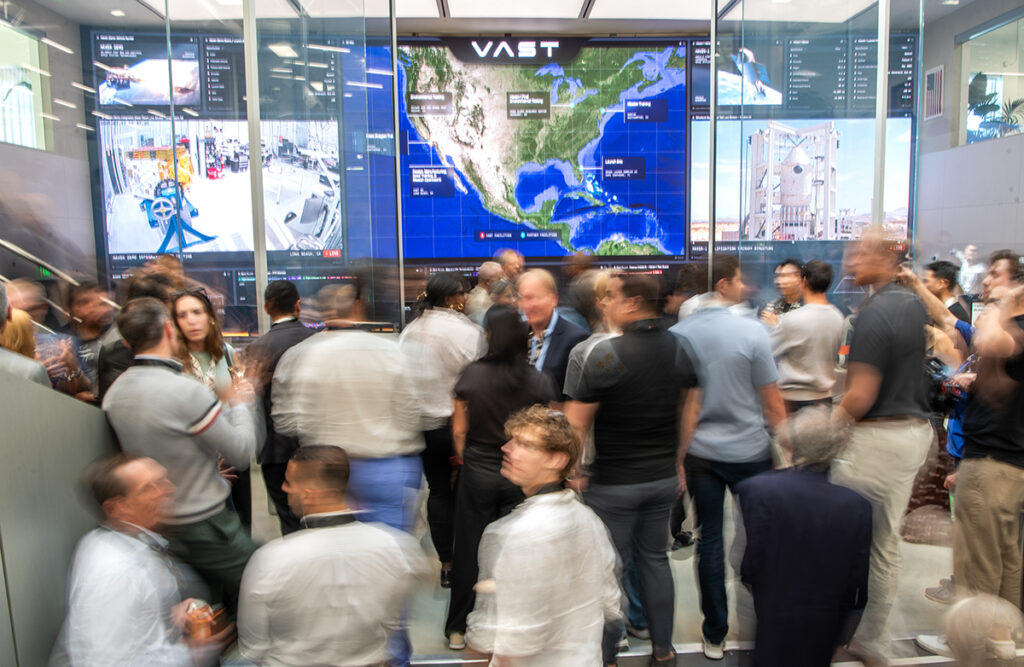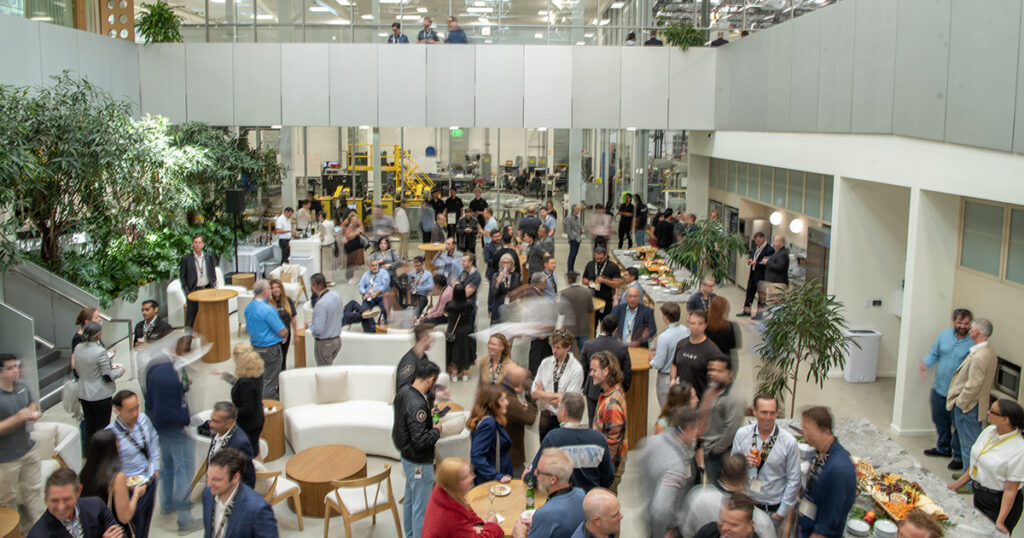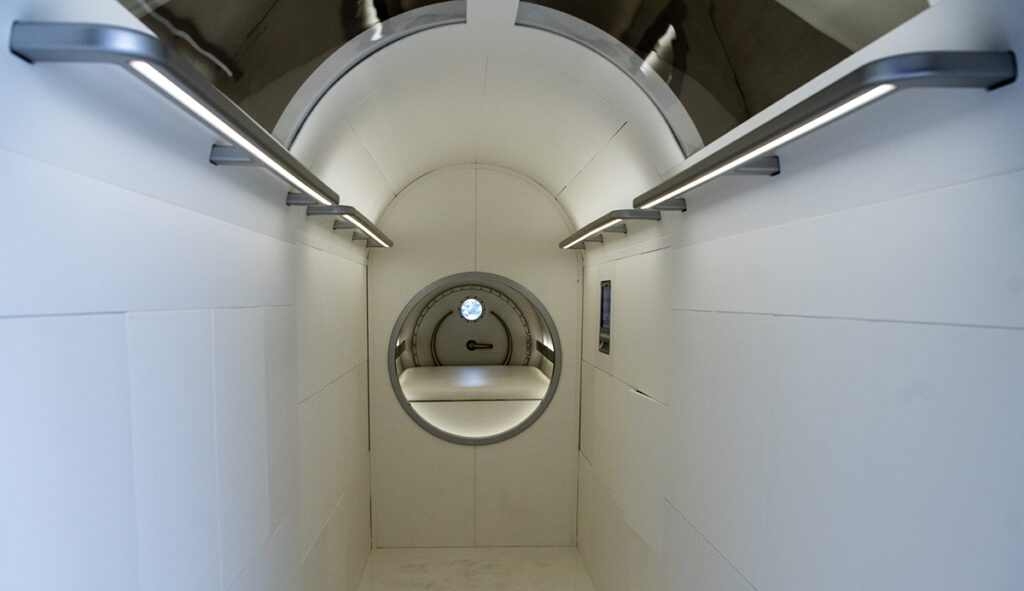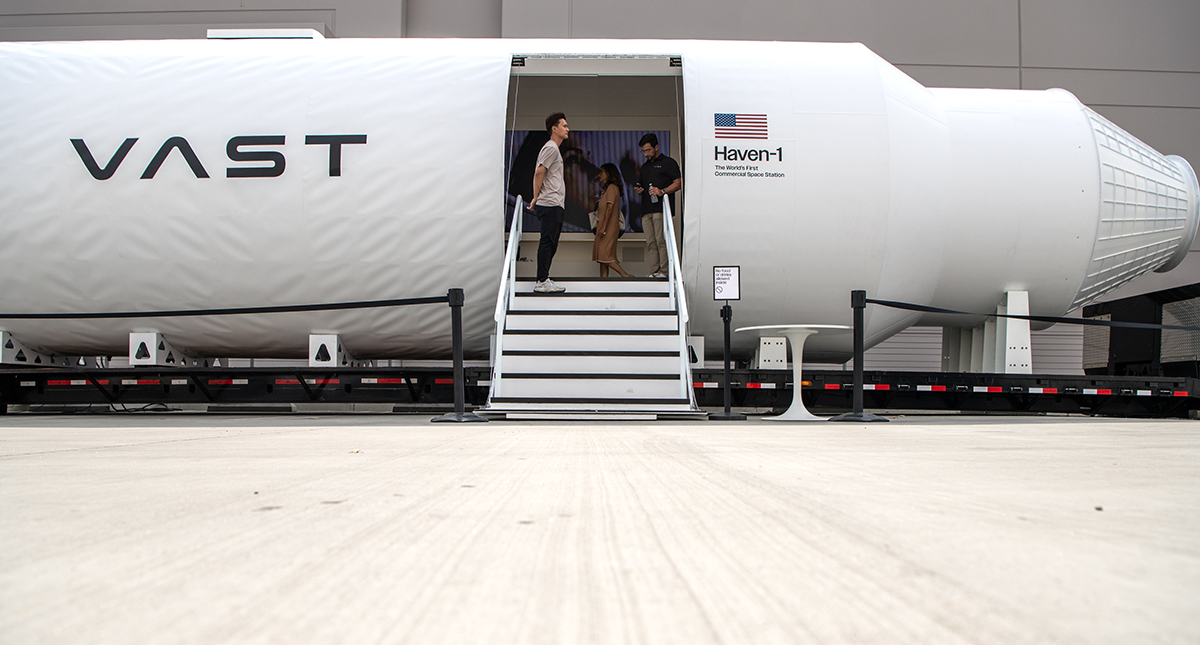Humanity’s next outpost in orbit may come from a warehouse in Long Beach.
Vast, an aerospace company headquartered near the city’s airport, announced this month it’s nearly finished building out the last of the three warehouses on its 189,00-square-foot campus, where workers are constructing what they hope will be the first commercial space station.
At a ceremony to mark the milestone, Long Beach officials and Vast engineers, ebullient over the company’s progress, said it epitomized the city’s “Space Beach” culture of forward-looking companies that challenge conventional technologies in the aerospace sector.
“We have American investment, American engineering, Long Beach talent, all coming together to shape the future,” said Long Beach Mayor Rex Richardson.
Drew Feustel, a former NASA astronaut chief who now acts as an advisor to the company, said the headquarters has transformed dramatically in the last 18 months.
The company, founded in 2021 by a crew of 40, has grown to a 950-person workforce of coders, engineers and industry experts working under the singular directive: to launch the first commercial space station into orbit.
“This is an exciting time for human spaceflight in general,” Feustel said. “It’s the first time in history we’ve seen this much investment and commitment to putting humans in space, and we plan to be the first ones to do it, and I think you’ll see the evidence of that here.”
Vast is among the handful of companies vying for NASA’s 2026 contract to replace the International Space Station. The ISS, built between 1998 and 2011, is scheduled for retirement at the end of 2030.
If selected, the company plans to have the first module of Haven-2, an evolved and NASA-certified version of Haven-1, in orbit by 2028. Further missions will add ligaments to the modular station through 2032. The company unveiled the model during the 75th International Astronautical Congress (IAC) in Milan last year.
At Vast’s open house Thursday, attendees gathered along suspended walkways and stairs to watch a cinematic trailer of the company’s plans to launch their first model, the Haven-1, into orbit as early as May 2026. A crew of four will be sent aboard a SpaceX Dragon spacecraft for the company’s first crewed mission as early as the following month.

“I can’t wait until the day that we have a party like this,” said Vast CEO Max Haot, standing before the screen that will eventually serve as the company’s mission control. “And on this screen we have the actual crew safely in the space station, (in) orbit live.”
So far, they’re on schedule. The company began construction of the Haven-1 at its Long Beach headquarters in July 2024 and has its primary structure welded together. Further tests — for the craft’s avionics, visual dome, air locks and more — will need to be conducted in Long Beach or at the company’s test stand in Mojave, Calif. Some tests, such as the simulated g-force of a launch, will be conducted at a NASA facility in Ohio.

About 90% of the station’s parts are constructed in-house, according to a Vast spokesperson.
Construction of the International Space Station, by comparison, enlisted the help of 15 countries, including the United States, Russia, Japan and numerous European nations.
Testing is the difficult part, workers said. Panels must withstand the subzero cold of space, the bullet-like impact of a passing meteorite and the pressure of launch.

Touring a one-to-one model of the Haven-1’s interior, staff showed the crew’s eventual living quarters, laboratories and even a stowaway eating area.
Vast is one of several aerospace start-ups berthed out of the 437 acres rezoned by the city for industrial and warehouse use at and around the Long Beach Airport, each of which seeks to leave their mark on America’s — and Long Beach’s — race to space.

